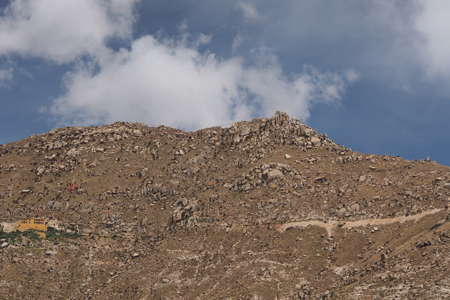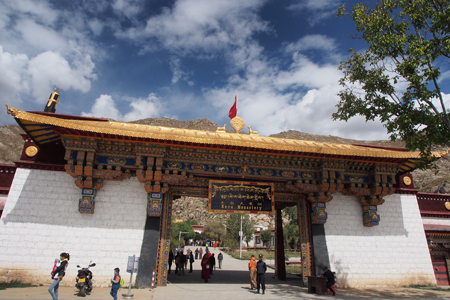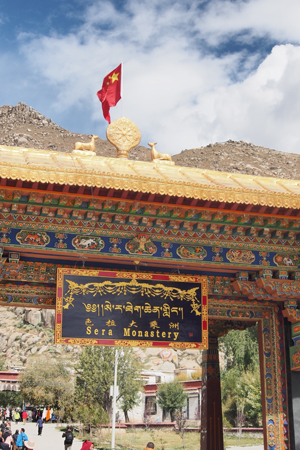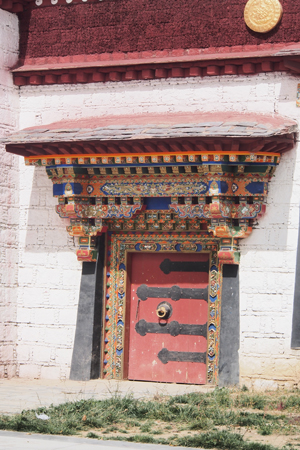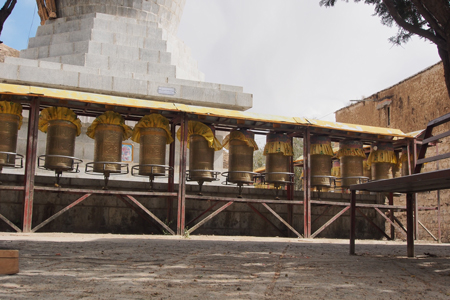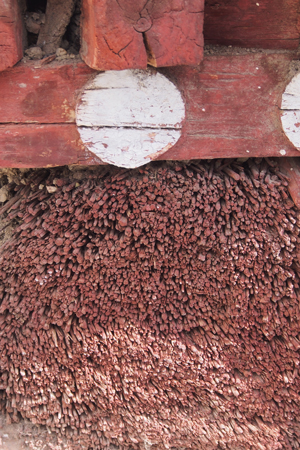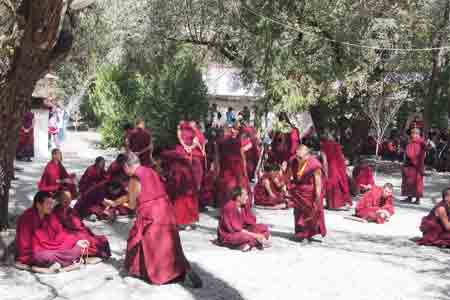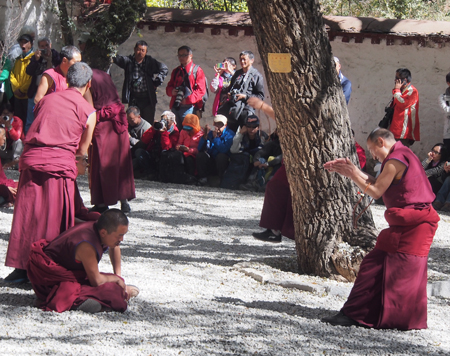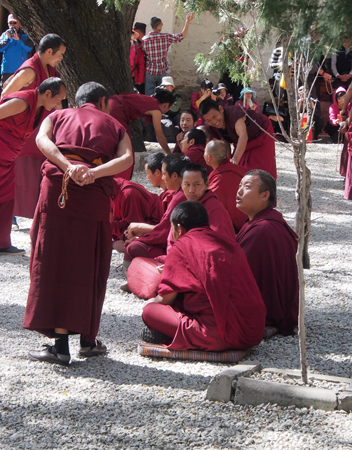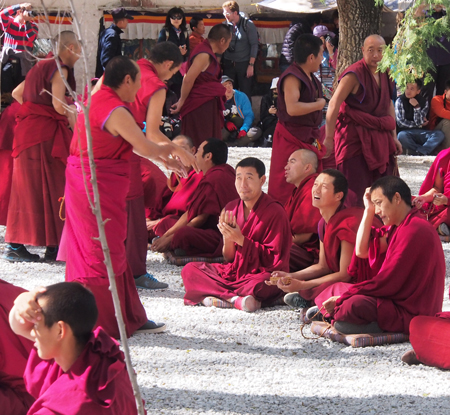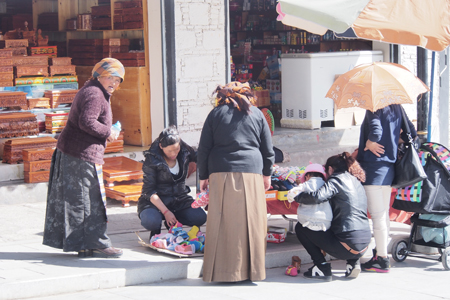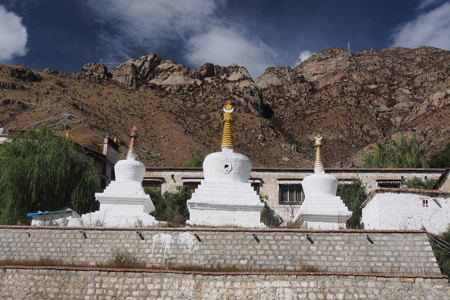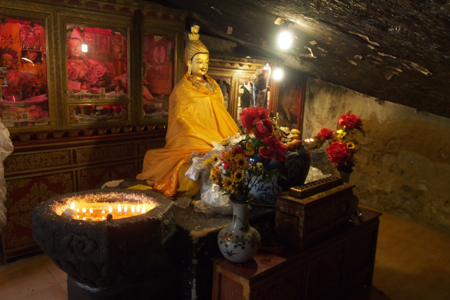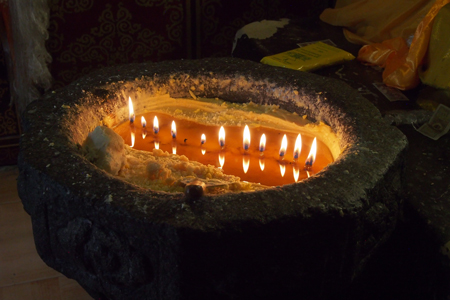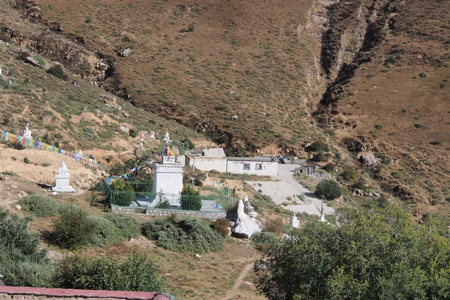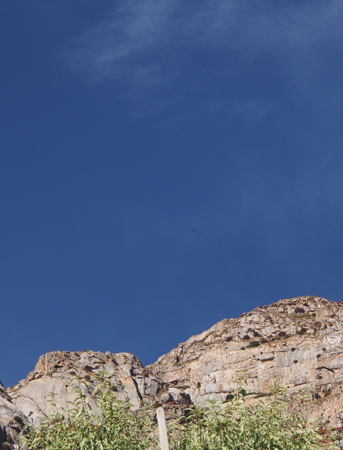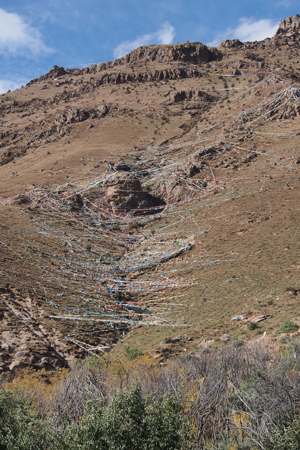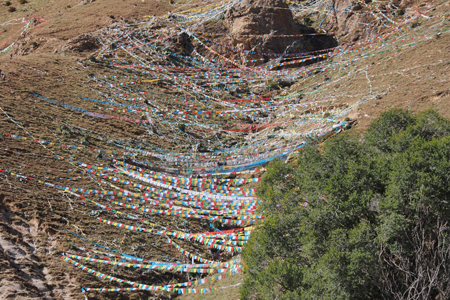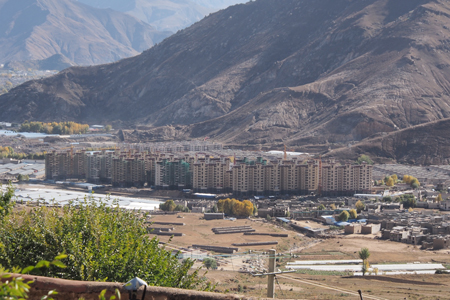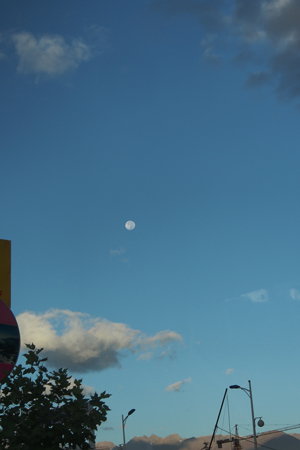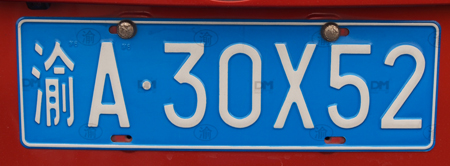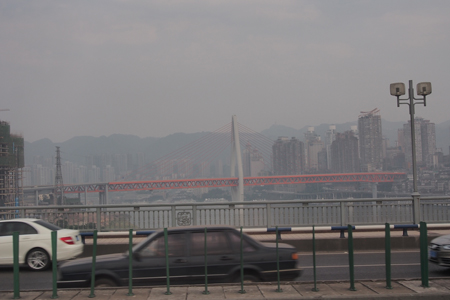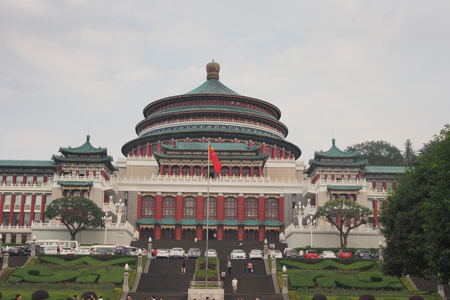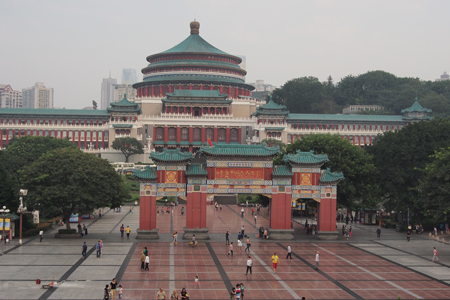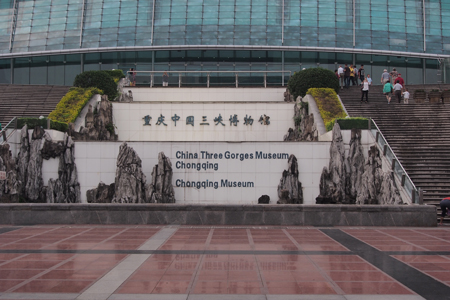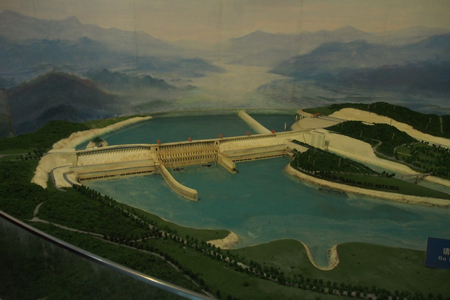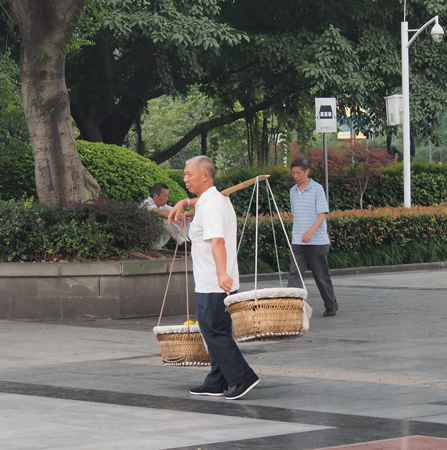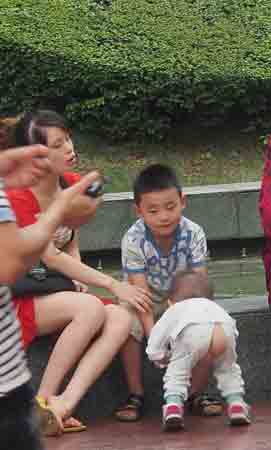After lunch we took the optional tour to the Sera Monastery and the Papungka Monastery. The Sera Monastery was founded in 1419 and once had 7,000 monks. The large complex has an assembly hall, three colleges, and 33 houses, some of which seem to be unimproved over the 600 years. There are now 600 monks living, studying, and working here. We entered through the new gate (2013) with a variety of mandalas on the ceiling. We walked to the room with three intricate mandalas made of sand and covered with plexiglass for visitors to see. The monks draw these and then put the colored sand over the design. They normally last only a short while and then are cleared off to design a new one.
Monastery on a hill
Gate of the Sera Monastery
Gate of the Sera Monastery
Intricate doorway
Prayer wheels
Walls of many of the buildings are made of bundled twigs
We entered a garden where monks “debate.” The teacher is standing and asks the seated student a question, like “is the sky blue?” The student must answer according to the Buddhist teachings like, “No. At night it is not blue.” If the student gives a wrong answer the teacher claps the back of one hand in the palm of the other. If he claps with the palms facing, it means continue with your answer. There was a lot of clapping going on with a group of about 30 students and 30 teachers. We were lucky to see the monks in action.
Entrance to the debating courtyard
Monks debating
Monks debating
Monks debating
Monks debating
Open market
We got back on the bus and rode halfway up one of the surrounding mountains to the Papungka Monastery. This is a small monastery of 26 monks and 200 nuns and rooms for people to come and meditate away from the noise in the city. This is the place where Songtsen Gampo first lived in a cave. We entered that two room cave, which is now a shrine or chapel. this is one of two sites in Lhasa for sky burials. Tibetans have four methods of burial: sky, water (usually for children and why Tibetans do not eat fish), cremation, and burial in stupas (only for the high lamas). After several funeral rites, a male family member brings the dead relative wrapped in white cloth to this mountain. A “funeral director” (important to the culture but a person of low social rank) chops up the body and lays it out for the vultures to eat. The belief is that this way the inner soul is taken up to the afterlife to be reincarnated. We saw several vultures flying around, people on the mountain collecting herbs for incense burning, prayer flags up the canyons, and many wild yaks. It was a beautiful day to be out of the city.
Stupas
Cave of Songtsen Gampo
Yak butter candle in the cave of Songtsen Gampo
This is one of two sites in Lhasa for sky burials. Tibetans have four methods of burial: sky, water (usually for children and why Tibetans do not eat fish), cremation, and burial in stupas (only for the high lamas). After several funeral rites, a male family member brings the dead relative wrapped in white cloth to this mountain. A “funeral director” (important to the culture but a person of low social rank) chops up the body and lays it out for the vultures to eat. The belief is that this way the inner soul is taken up to the afterlife to be reincarnated. We saw several vultures flying around, people on the mountain collecting herbs for incense burning, prayer flags up the canyons, and many wild yaks.
Site of the sky burials
Black dot in the center of the picture is a flying vulture
Prayer flags on the mountain
Prayer flags on the mountain
Lhasa from Papungka Monastery
Fri., 10/10/14 – Lhasa to Chongqing and the Yangtze River Boat
We were up, packed, and at breakfast by 7 AM and left for the airport at 7:50. Our flight was delayed more than an hour with the plane sitting away from the gate, but the flight was smooth once we got going.
Moonrise on the way to the airport
Moonrise on the way to the airport
Since our flight was 2 hours late so we only had 40 minutes to take pictures of the Chongqing City Hall/Conference/Performance Building and walk across the city square for a quick walk through the Three Gorges Dam Museum. They tried to show some of the places, rock formations, homes, and scenery that are now submerged by the creation of the dam. The exhibit states that one million people “willingly” gave up their homes and farms for this project – such propaganda!
License plate of the Chongqing area
Lovely cable-stayed bridge through the pollution
Chongqing City Hall/Conference/Performance Building
Chongqing City Hall/Conference/Performance Building
Model of the Three Gorges Dam
Local Chinese
The pants worn by children are usually split up the back to facilitate potty use.
Chongqing is the largest city in China, and perhaps, in the world with 33 million people – depending on how you define “city” and how you count. In 1997 with the development of the Three Gorges Dam it was made into the fourth municipality governed directly by the central government in Beijing. It is a hilly city so not many people ride bicycles here. It is on the Yangtze River. During WWII the city became the main place for the manufacture of military supplies – everything from ammunition to tanks. After the war the factories turned to making heavy industry products from cars to refrigerators. Ford and Suzuki have assembly plants in the city. Not surprisingly, smog is a real problem in the city and there was a severe smog alert today.
After dinner in the city we were bused to the riverside to board our Yangtze River cruise ship, the Victoria Grace .It is an old tub(about the oldest in their fleet) with our OAT group of 13 Americans, a tour group of 8 Germans, and 170 Chinese. Our room is small, smelly, and dusty. The bathroom sink faucet leaks onto the floor and the towels are rags – especially the gray, dirty bath mat. The beds are okay. There is room for only one suitcase. We do have a balcony with 2 chairs, but since every time we are docked there will be another river boat on both sides of our boat, we can’t sit outside. Not exactly the lap of luxury!
| Return to Top | Return to Itinerary | Return to Trips page to view other trips | Return to Dreamcatcher Home Page |
